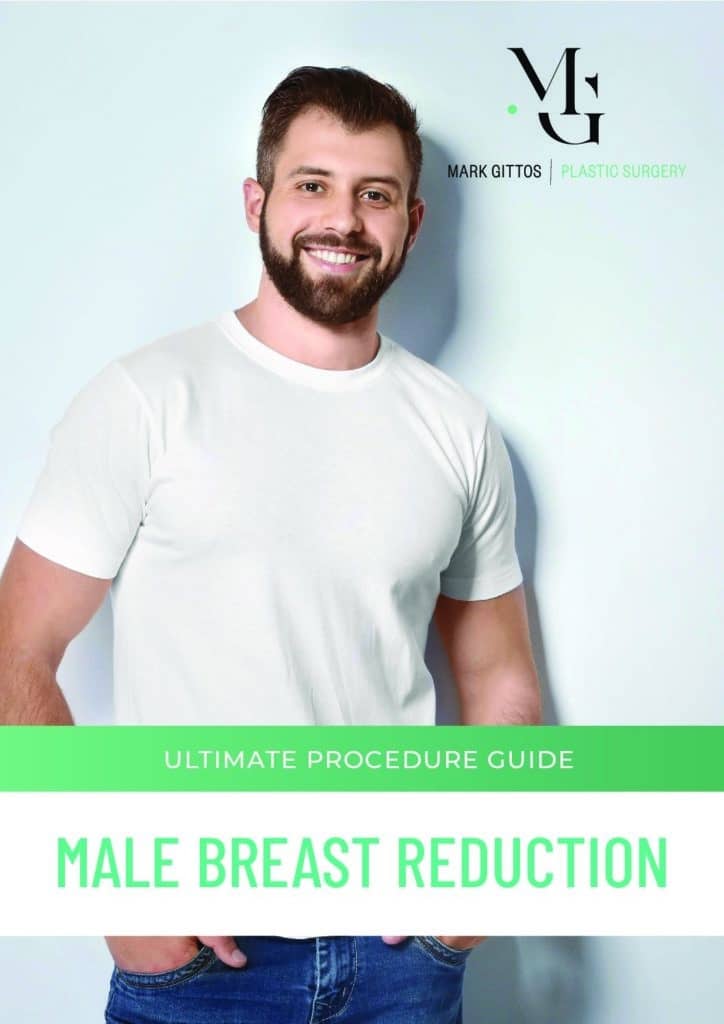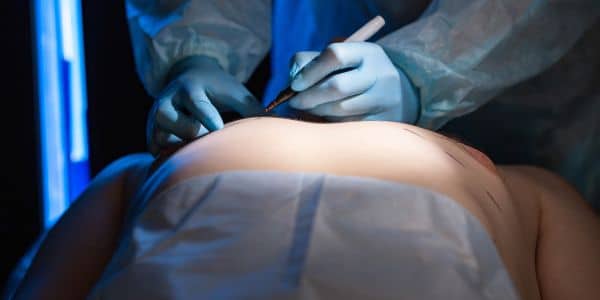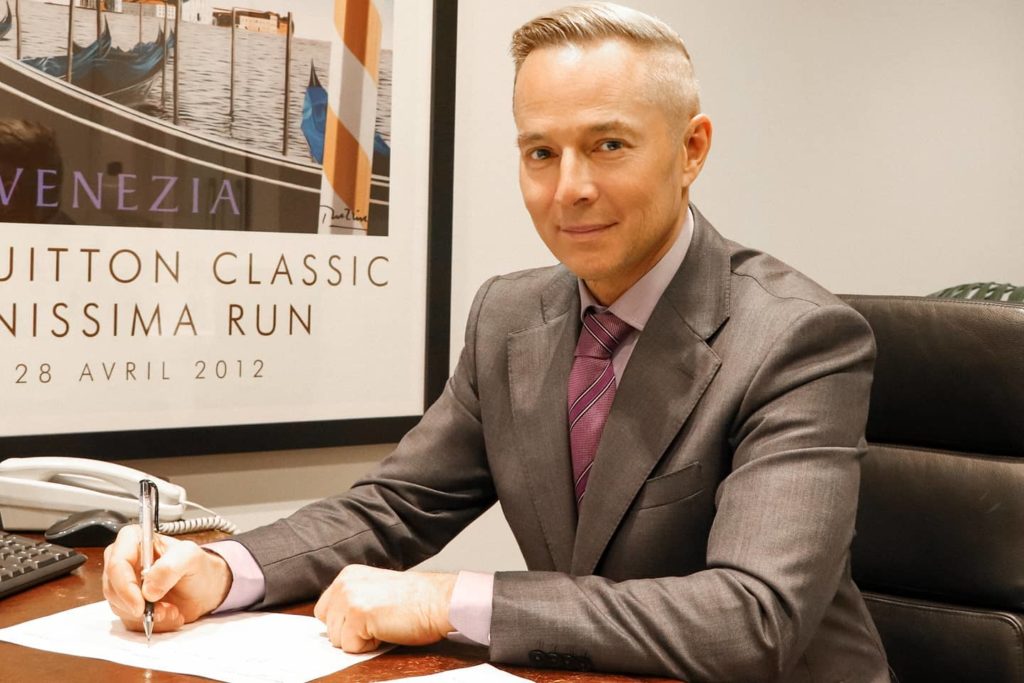Causes and Treatment for Man Boobs – Gynaecomastia Surgery
A topic that might be a source of discomfort for many men – the so-called “man boobs,” or in medical terms, gynaecomastia. This condition is more common than you might think, and it can affect men at any age. It’s not just a cosmetic issue; it carries emotional and physical implications, often leading to embarrassment and low self-esteem.
Dr Mark Gittos is a renowned plastic surgeon recognised for his expertise in male procedures, particularly breast reduction surgery for men. With a commitment to excellence and a patient-centred approach, Dr Gittos has established a reputation for delivering outstanding results tailored to the unique needs of his male clientele. His practice spans two major cities, allowing him to cater to a diverse patient base. In Auckland, New Zealand, he offers his surgical expertise to the local community, ensuring that men and women have access to top-tier cosmetic procedures. At the same time, his presence in London, UK, showcases his international acclaim and dedication to serving patients on a global scale. Whether in Auckland or London, patients seeking male breast reduction surgery can trust in Dr Gittos’ vast experience and meticulous surgical techniques to achieve their desired outcomes.
Download Dr Mark Gittos’ Guide to Male Breast Surgery – Gynecomastia or Man Boobs

What Are Man Boobs (Gynaecomastia)?
Man boobs is a condition characterised by the enlargement of male breast gland tissue. Contrary to common belief, it’s not just fat accumulation; instead, it’s the actual growth of glandular tissue. Men and boys produce both testosterone and estrogen, although testosterone outweighs estrogen. When the balance tilts in favour of estrogen, gynaecomastia might occur.
Gynaecomastia is not a severe health problem, but it can be an uncomfortable and sometimes painful condition. It can affect one or both breasts, sometimes unevenly.
Common Causes of Man Boobs
Many factors can lead to the development of man boobs. These include hormonal imbalance, certain medications, ageing, alcohol abuse, and obesity. In many cases, the exact cause is unknown. Newborns, boys going through puberty, and older men may develop gynaecomastia due to natural changes in hormone levels.
Certain health conditions can also cause man boobs, such as kidney failure, tumours, liver disease, and malnutrition. Remember, if you notice unusual growth in your breast tissue, it’s essential to seek medical attention to rule out serious underlying conditions.
The Emotional and Physical Impact of Man Boobs
Man boobs can have a significant emotional impact, often leading to low self-esteem, embarrassment, and social isolation. Many men with this condition avoid physical activities and public exposure, severely limiting their quality of life.
Physically, man boobs can cause discomfort and tenderness. In rare cases, they can also cause pain. However, it’s the psychological impact of gynaecomastia that often poses the most significant challenge.
How to Diagnose Gynaecomastia
If you believe you may be experiencing symptoms of gynaecomastia, it’s essential to approach the situation with a clear understanding and seek appropriate medical advice. Here’s a step-by-step guide on how to diagnose gynaecomastia:
Recognising the Symptoms
Gynaecomastia typically presents as an enlargement of the male breast tissue. This enlargement can be tender or painful to touch. It’s crucial to differentiate between gynaecomastia and other conditions, such as fatty deposits due to obesity, which is known as pseudogynaecomastia.
Consultation with a Healthcare Professional
If you suspect you might have gynaecomastia, the most crucial step is to consult a plastic surgeon, preferably one experienced in performing procedures for men. During the consultation, the plastic surgeon will perform a thorough physical examination to assess the size, consistency, and any other abnormalities in the breast tissue.
Discussing Medical History
Your plastic surgeon will inquire about your medical history, including any medications you might be taking, history of drug use, and any family history of breast disorders or cancer. It’s essential to be honest and provide all relevant information, as certain medications and conditions can induce gynaecomastia.
Undergoing Diagnostic Tests
To get a clearer picture of the underlying cause, your plastic surgeon might order specific blood tests. These tests can check hormone levels, liver function, and kidney function, among others. Imaging tests, such as an ultrasound or mammogram, can also be ordered to visualise the breast tissue and check for any abnormalities.
Mammogram
In some cases, a mammogram might be recommended. This is an X-ray of the breast that can help in identifying any unusual growths or tumours. If the mammogram results are inconclusive or if there’s a suspicion of a more severe condition, further tests might be required.
Biopsy
If the mammogram doesn’t provide clear results, or if there’s a suspicion of a tumour or malignancy, a biopsy might be needed. During a biopsy, a small sample of the breast tissue is removed and examined under a microscope to determine the nature of the cells.
Once all tests are completed, your plastic surgeon will discuss the results with you and recommend the best course of action. This could range from monitoring the condition, medication to balance hormone levels, or in rare cases, surgery.
Non-Surgical Treatments for Man Boobs
Not all cases of man boobs require surgery. If the condition results from an underlying health issue, treating that issue might help reduce the size of the breasts. In other cases, medication can help.
Your doctor might recommend hormone therapy or other medications to balance your hormone levels. Lifestyle changes, such as exercising and maintaining a healthy diet, can also play a significant role in managing this condition.
Gynaecomastia Surgery for Man Boobs

While some cases can be managed with non-surgical treatments, others might require a more direct approach, especially when the condition leads to physical discomfort or emotional distress. Here’s a comprehensive overview of the surgical treatment for gynaecomastia:
- Why Consider Surgery?
- Non-surgical treatments, such as hormone therapy or medications, might not always yield the desired results
- In cases where gynaecomastia causes significant pain, discomfort, or leads to emotional distress due to appearance concerns, surgical intervention becomes a viable option
- Understanding Gynaecomastia Surgery:
- Gynaecomastia surgery is a procedure specifically designed to address male breast enlargement
- The primary goal of the surgery is to restore a more masculine chest contour by removing excess breast tissue and fat
- Types of Surgical Procedures:
- Liposuction: This technique is used primarily to remove excess fat from the breast area. A small incision is made, and a thin tube (cannula) is inserted to suck out the fat. It’s especially suitable for those whose gynaecomastia is primarily due to fatty tissue
- Mastectomy: This procedure involves the removal of the breast gland tissue. It’s more invasive than liposuction but is typically done endoscopically, meaning smaller incisions are used, leading to reduced scarring and quicker recovery
- Duration and Recovery:
- The gynaecomastia surgery usually takes about 90 minutes, depending on the complexity and the specific procedure used
- Most patients can return home on the same day of the surgery. However, it’s essential to arrange for someone to drive you home post-operation
- Recovery time can vary, but most individuals can resume regular activities within a week or two. Strenuous activities and exercises should be avoided for at least three to four weeks post-surgery
- Post-Surgical Care:
- It’s common to experience some swelling, pain, and bruising after the surgery. Your plastic surgeon will prescribe painkillers and might recommend wearing a compression garment to support the healing process
- Regular follow-up appointments will be scheduled to monitor the healing process and ensure there are no complications
- Potential Risks:
- As with any surgery, there are potential risks involved, including infection, scarring, asymmetry, and anaesthesia-related complications. It’s crucial to discuss these risks with your surgeon before deciding on the procedure
FAQs about Man Boobs and Gynaecomastia Surgery

Can I get rid of man boobs if I exercise?
- Exercise can be an effective way to reduce the appearance of “man boobs,” especially if they are primarily due to excess fat, known as pseudogynaecomastia. Incorporating strength training exercises that target the chest muscles, such as push-ups, bench presses, and chest flies, can help tone and firm the chest area. Additionally, cardiovascular exercises can aid in overall fat loss. However, if the enlargement is due to glandular tissue, as seen in true gynaecomastia, exercise alone may not completely resolve the issue, and medical intervention might be necessary.
What are the complications of gynaecomastia surgery?
- Like any surgical procedure, gynaecomastia surgery comes with potential risks and complications. These can include infection at the surgical site, scarring, bleeding, asymmetry in the chest area, loss of nipple sensation, contour irregularities, and complications related to anaesthesia. More than this, there’s a possibility of fluid accumulation or seroma formation post-surgery. It’s essential to discuss these risks with your plastic surgeon before undergoing the procedure to ensure you’re well-informed.
What is the difference between gynaecomastia and chest fat?
- Gynaecomastia and chest fat, often referred to as pseudogynaecomastia, are two distinct conditions, though they can appear similar. Gynaecomastia involves the enlargement of the glandular tissue in the male breast, often due to hormonal imbalances. On the other hand, pseudogynaecomastia is the accumulation of excess fat in the chest area without glandular tissue enlargement, resulting from obesity or weight gain. While both conditions can lead to the appearance of “man boobs,” their causes and treatments differ.
What not to do after gynaecomastia surgery?
- After undergoing gynaecomastia surgery, there are several precautions patients should take to ensure optimal healing. It’s crucial to avoid strenuous activities and heavy lifting for at least three to four weeks post-surgery. Direct sun exposure to the surgical area should be minimised to prevent darkening of scars. Patients should also refrain from smoking, as it can hinder the healing process. Wearing compression garments as recommended by your plastic surgeon can help reduce swelling and support the chest during recovery. It’s essential to attend all follow-up appointments and promptly report any signs of complications to Dr Gittos.
Is it OK to live with gynaecomastia?
- It’s okay to live with gynaecomastia if it doesn’t cause significant physical discomfort or emotional distress. Many men with gynaecomastia lead normal, healthy lives without seeking treatment. The decision to treat gynaecomastia, whether through medication, surgery, or other interventions, is a personal one. Factors to consider include the severity of the condition, its impact on self-esteem and daily activities, and potential health concerns. If someone chooses not to treat gynaecomastia, regular medical check-ups are still recommended to monitor the condition.
Further Reading about Procedures for Men with Dr Gittos
- Read Dr Gittos’ Male Breast Surgery Page
- Read Dr Gittos’ Neck Lift Surgery Page
- Read Dr Gittos’ Liposuction Surgery Page
- Read Dr Gittos’ Tummy Tuck Surgery Page
- Read Dr Gittos’ Rhinoplasty Surgery Page
Medical References about Man Boobs and Gynaecomastia
- Enlarged male breast tissue (gynecomastia) – Cleveland Clinic
- Enlarged breasts in men – Mayo Clinic
- Gynecomastia: Etiology, Diagnosis, and Treatment
- Gynecomastia in Adolescent Males – PMC
About Dr Mark Gittos FRACS (Plast) – New Zealand Plastic Surgeon
Practice locations in Herne Bay Auckland, Northland and Bay of Plenty – Kerikeri, Whangarei, New Plymouth & Tauranga
Dr Mark Gittos is a leading Specialist Plastic Surgeon and operates a practice in Herne Bay, Auckland and in the UK. The practice focuses on both surgical and non-surgical procedures, each designed to help restore, improve or change a physical characteristic or problem. The first step in every case is to talk through your personal requirements and explore all the options, before deciding on the most effective solution.
Dr Mark Gittos offers high quality, natural-looking cosmetic surgery results and is highly experienced in Breast, Body and Face Surgery having performed over 4000 Surgeries in the last 26 years. With worldwide expertise Dr Gittos is an expert in breast, face and body surgery for men & women.
Naturally, before any treatment is begun, we will explain clearly the advantages and risk factors; so that you have the information you need to make an informed decision that is best for you. Visit the practice to find out more.

NEXT STEPS
Please NOTE: Dr Gittos only performs surgery on non-smoker patients with a BMI less than 30. To check your BMI please visit the NZ Heart Foundation website. For help giving up smoking before surgery visit the Smoke Free website
Do your Research
- Read the Website and Blogs relevant to your procedure
- Browse our Frequently Asked Questions including how to choose a Surgeon for your procedure
- Download and read the FREE Guides to Surgery
What to Bring to your Plastic Surgeon Consultation
- Bring a friend or relative to help discuss the information and your choices
- Take lots of notes and read the documents provided thoroughly
- Dress in simple clothes as you may need to undress for examination
- Bring your medical referral and any relevant medical documents or test results
Book your Initial Surgery Consultation
- A Referral from your GP or specialist is helpful but NOT essential – you can have a consultation without a GP Referral
- Email us or Call on 09 529 5352 to arrange your surgeon consultation appointment.
- Book a consultation with Dr Gittos by paying the Consultation Fee – $350 incl GST
Traveling for Surgery? – Consider post-surgery luxury recovery in a Hotel with LuxeCare
Please contact us to arrange to book a consultation with our Specialist Plastic Surgeon or to speak with our Patient Care Advisor.
Send an enquiry form today or phone 09 529 5352 during Clinic Hours
